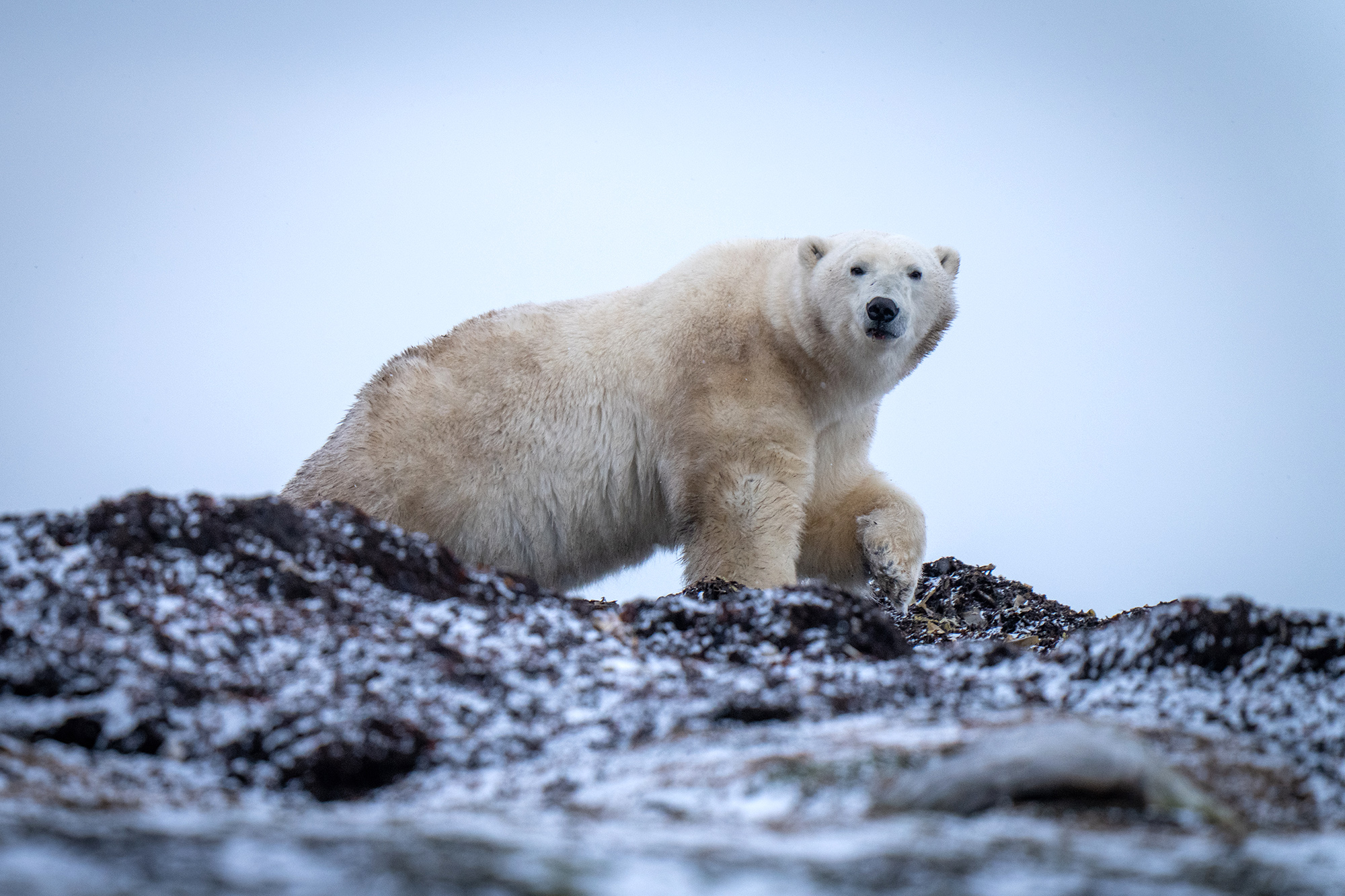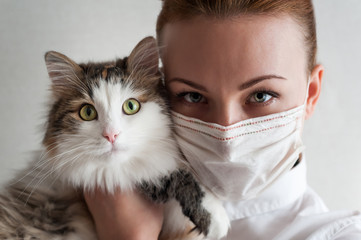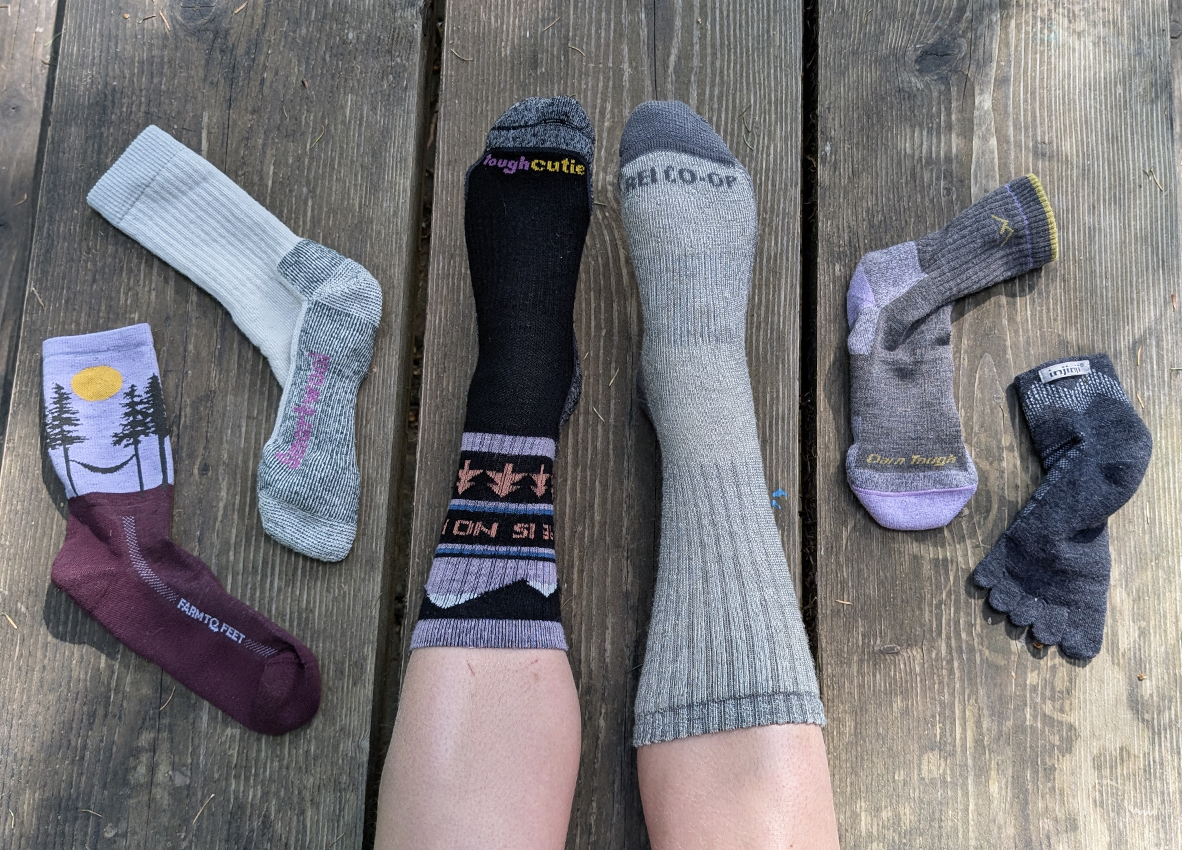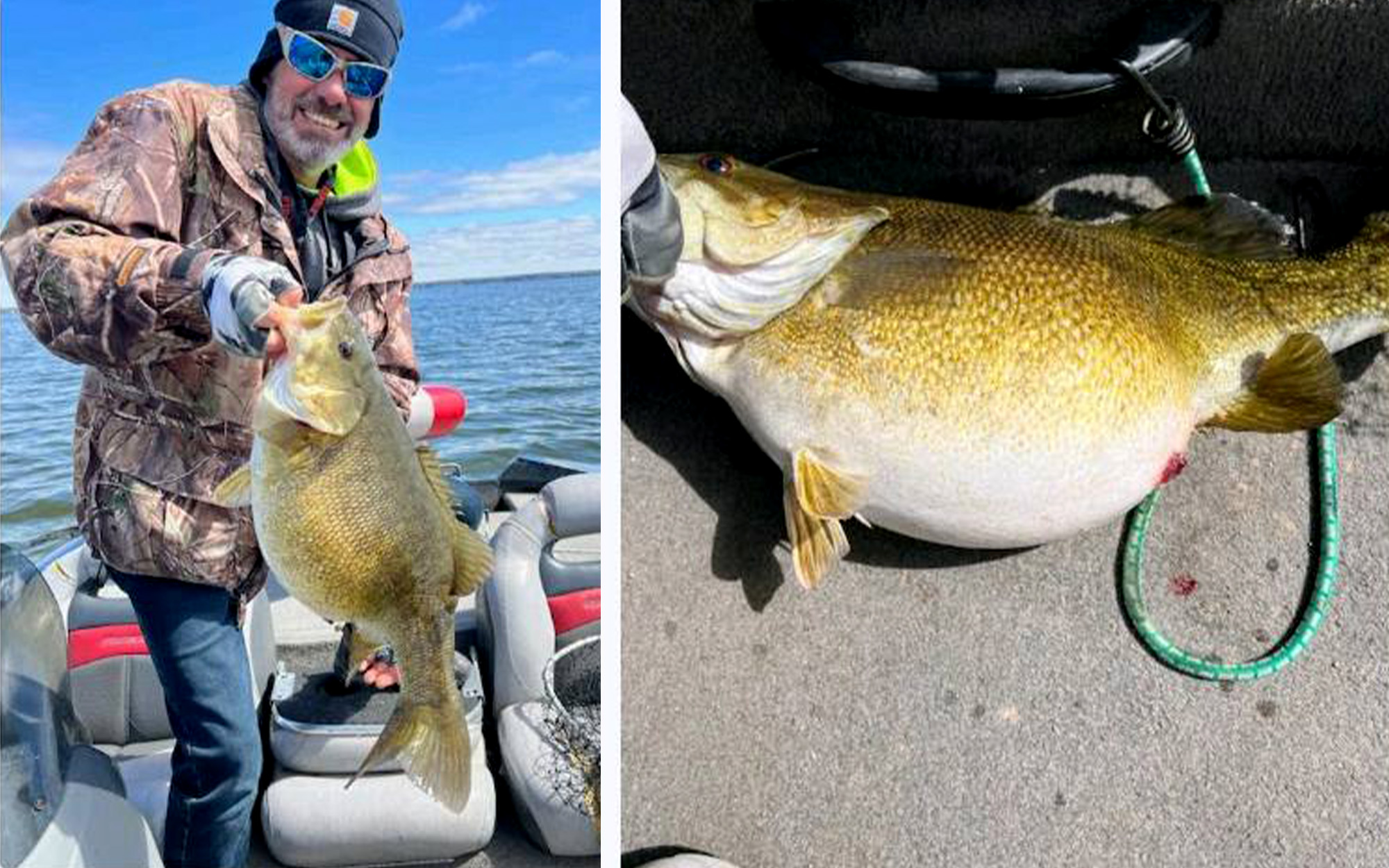Where to Shoot a Deer
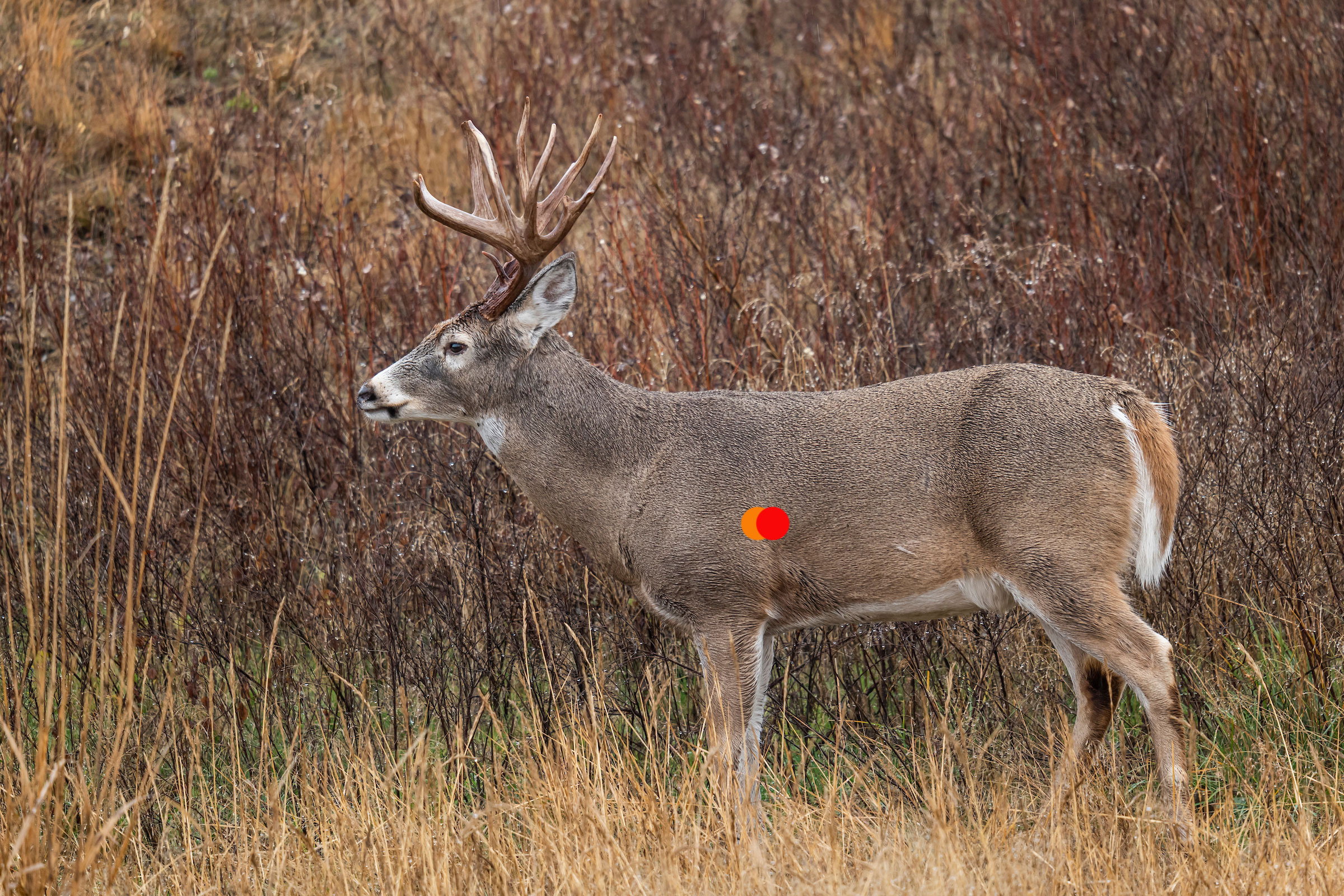
Knowing where to shoot a deer for a quick kill is the responsibility of every deer hunter. Most of us were taught that the best place to shoot a deer is the “boiler room,” which means the top of the heart and the lungs. For the vast majority of hunting scenarios, that’s still the best option. Penetrating these vital organs (with a bullet or an arrow) leads to massive blood loss and a quick death. It also results in very minimal meat damage.
So, if you know you want to shoot a deer in the heart and lungs, where exactly should you aim?
Put simply, if the deer is broadside, follow the front leg up the deer and aim just below the halfway point on its chest. Look for the “crease” that the deer’s shoulder creates. Shooting with a rifle, you can edge tighter to the deer’s shoulder. Bowhunters want to hit just an inch or two behind the crease, which allows a little more room for error (more on this later).
There isn’t much of a difference in aim point for rifle hunters or bowhunters, as you can see in the photo below.
The video below, created by the National Deer Association, does an excellent job explaining where to shoot a deer on an anatomically correct deer target. Look closely at the bone structure of a deer’s shoulder. It is not one solid mass of bone. First the bone angles forward of the leg and then the shoulder blade sweeps back. Understanding this anatomy is especially important for archers who generally want to avoid hitting these large bones with their arrow (well constructed rifle bullets will easily blast through bones). This is a key difference for bowhunters: There’s simply a much smaller margin of error.
Understanding Shot Angles
Now, the discussion on where to shoot a deer gets more complicated when deer are quartering away from you or angling toward you. You still want to hit the vital area of the heart and lungs, but now you must change your aim point. The best way to do this is to visualize where the heart and lungs are placed within the deer’s body cavity and aim so that your bullet or arrow angles through them. In general, this means holding farther back on quartering away shots and farther forward on quartering-to shots.
Quartering-Away Shots
Many hunters prefer quartering-away shots to broadside shots. In some cases, the angle creates a larger margin of error for hitting the lungs. Plus, the deer is facing away from you so it’s easier to draw or shoulder your gun without being detected.
Visualize an angle that takes your bullet or arrow through the deer’s heart and lungs and then continues into its offside shoulder, or just in front of it. One way to do this is to look at the offside leg. Follow the front of the offside leg up to the body.
The photo above is the aim point for bowhunters on this angle. Rifle hunters should aim a few inches farther forward.
Quartering-To Shots
Quartering-to shots are not ideal for bowhunters. This is because you must hold into the shoulder or risk hitting guts. Lighter arrows and lower draw weight bows will not penetrate bones in the deer’s shoulder. But for rifle hunters shooting quality bullets, the quartering-to angle still presents a good shot opportunity. You must hold into the frontside shoulder now, with your bullet exiting the middle or back of the rib cage. This shot will damage more meat than a well-executed broadside shot.
Frontal Shots
Frontal shots can be incredibly effective but they offer a smaller margin of error than broadside shots. When a deer is facing directly toward you, aim between the two shoulders, just below the half-way point on its chest. Executed properly, this shot typically drops deer very quickly. Because your target is much narrower at this angle, however, this shot should only be taken at close ranges.
Bowhunters who hunt from the ground and rattle in or decoy bucks commonly see frontal shots. If you’re a bowhunter and intend to take frontal shots, you should opt for a heavy arrow with a high FOC and heavy, durable fixed-blade broadheads. But most importantly, you must have your setup tuned properly and be able to shoot baseball sized groups without fail.
Going Away Shots (Texas Heart Shot)
You will see some hunters bragging online about the “Texas heart shot” which means shooting a deer that is facing straight-away, through the anus. It’s true that when this shot is made properly, with a rifle, it can be quickly fatal. The bullet passes through the rear end of the deer and takes out its vitals in front. Essentially, it’s the same as the frontal shot but in reverse.
However hunters (and especially bowhunters) should pass on this shot angle. Deer are often angling away, not walking perfectly straight away. So it’s very likely that you’ll hit the deer in the ham and miss the vital organs. Also, a deer presenting this shot angle is likely moving, which only increases the likelihood of a marginal hit. The one exception here is when making a followup shot. If you know you hit the deer with your first shot (and are unsure of how well) then it’s wise to follow up with a going-away shot if you can.
Where to Shoot a Deer with a Bow
Shooting a deer with a bow is more complicated than shooting one with a gun. As we’ve already discussed, there’s less margin for error with archery gear. Plus, since bowhunters are often hunting from treestands and taking close-range shots, they have to account for the sharper angle of the shot. Lastly, deer commonly jump a bow string on farther shots, meaning they duck or spin the instant you loose your arrow. Here’s what you need to know about where to shoot a deer with a bow.
Crease vs the Vital V
Many bowhunters advocate for shooting deer through the shoulder in the “vital V,” instead of the crease. By this they mean, holding into the deer’s shoulder, where its humerus and scapula make a sideways V shape. If you place your arrow through this window, it’s unarguably deadly. There are no bones (besides the ribcage) in this V. Plus, bowhunters shooting heavy arrows, stout draw weights, and durable fixed-blade broadheads are able to penetrate these bones without issue anyway. The YouTube personality “Ranch Fairy” has been one of the most prominent modern advocates of aiming for the Vital V, and you can see his explanation in the video below.

The Case for Aiming for the Crease
Aiming for the vital V is problematic, however, especially for new bowhunters. If you pull your shot low or forward, you’ll hit heavy bones in the shoulder, which your arrow might not pass through. Plus, the lungs narrow in the deer’s forward body cavity. Most bowhunter’s education courses, and this author recommend holding farther back into the crease of the deer’s shoulder, and not aiming for the vital V.
As long as you’re using quality archery gear, a well-placed shot through the crease will be deadly, almost without fail. Arrow weight, broadhead style, and draw weight aren’t as much of a factor here. Plus, you have slightly more room for error by holding behind the shoulder. By aiming for the crease, you’re holding for the area on the deer’s body where the lungs are the tallest and widest. If you miss a little forward, you’ll likely hit the vital V, if you miss a little back, you’ll likely hit the back of the lungs and liver.
It’s also easy to see the crease and use it as a specific spot to aim for. Picking a singular aim point is crucial.
Read Next: Why Mechanical Broadheads Are Still the Best Option for Most Deer Hunters
Shooting from a Tree Stand
When shooting from a tree stand, your arrow will be striking deer at a downward angle. The higher your stand and the closer the deer, the steeper this angle will be. For example, if you’re 20 feet up, shooting a deer that’s 15 yards away, you’ll be shooting downward at an approximately 60-degree angle. When your arrow strikes the deer, it will look something like the photo below.
So for close shots at a steep angle, you want to aim slightly higher. This ensures your arrow will pass through both lungs. But the keyword here is “slightly.” Generally speaking, hitting a deer too high with a bow is bad.

The best thing you can do to master elevated shot angles to is practice them. Use a 3D target and shoot from an elevated position, as if you were in a treestand. This will help you get an instinctual understanding of where to hold for different shot angles. You want your arrow to pass through the top of the near lung and the bottom of the far lung.
Jumping the String
All of this gets a bit more difficult for bowhunters because so often deer jump the string or duck at the sound of the bow releasing. This is typically only an issue beyond 20 yards. Some bowhunters solve for this by simply aiming a little lower for farther shots. For shots beyond 20 yards, it’s a good idea to hold a little lower, but still in the vital zone. However there is no rule or formula for outsmarting string-jumping deer.
“Their reactions are so dynamic and different in every situation that you cannot predict what the deer is going to do,” says Aaron Warbritton of The Hunting Public. “Over all the video we’ve watched, we noticed that some deer would duck straight down to the ground. Some deer would drop a foot at 30 yards. Others would drop four inches at 30 yards. Still other deer would not move at 30 yards. Some would duck and roll away. So, they would be broadside at 30 yards, duck six inches, roll away and by the time the arrow impacted, the deer is actually quartering away instead of broadside.”
Every scenario is slightly different, but here are some basic tips and takeaways to deal with deer jumping the string:
- Big animals duck less. Small Southern deer and twitchy does generally duck more.
- Watch the deer’s body language and attitude. For example, rutting bucks that are distracted by does duck less.
- Ambient noise matters. Windy days with blowing leaves and grasses generally means less ducking than dead-quiet days.
- The vast majority of whitetails do duck or react to the shot in some way—upward of 80 to 90 percent.
- Stopping deer for a shot does promote ducking. Ideally, let the deer stop on its own or stop it as softly as possible (by using, say, a squirrel noise). But some rutting bucks will require a loud bleat to stop.
- Depending on the conditions, ducking is most problematic from 25 to 40 yards. At long ranges whitetails seem to react less to the shot. But setting up for close shots, is the best way to ensure good, lethal hits.
Where to Shoot a Deer with a Gun
Because rifle bullets carry so much more energy and generally do more damage to bones and organs, rifle hunters have more options besides the heart and lung area. With a heart/lung-shot, deer often run off even though they die quickly. A heart-shot deer can still make it 100 yards. Some hunters want to drop deer in their tracks, so should these hunters aim elsewhere? We asked a number of deer cullers—sharpshooters whose job requires them to kill deer quickly, for their perspectives on bullet placement. Their advice, detailed below, is: “It depends” on distance, bullet type, shooting ability, and your goals for meat retention. Besides the heart and lung area, other options include high-shoulder, neck, and head. There are pros and (major) cons to each.
High-Shoulder Shot
Pros: The ultimate shock-and-awe shot. A big, fast-moving bullet will likely snap the spine, short-circuit the nervous system, break bones, and anchor a deer where it stands.
Cons: The volatile, upsetting bullets best suited for this shot damage a lot of meat, from the shoulder through the neck and upper backstrap. Plus, it’s easy to miss high when aiming here.
When you sharpshoot deer for a living, as Grant Woods did for 21 years, “you can’t afford misses or wounded deer running around,” he says. Both cost you time and money—especially a wounded, bleeding deer, running for its life and spooking other deer.
Woods, a noted whitetail biologist, did much of his deer-control work on golf courses. There, shots usually ranged between 200 and 300 yards. His first choice was the double-shoulder shot, with a .308 round entering a shoulder blade on one side, slamming through the body and into the far shoulder blade.
“If you watch slow-motion video of a deer being shot this way, its whole body flexes when the bullet hits,” says Woods. “That snaps the spine. That deer’s never going to move again.” This shot can damage more meat than the heart-lung approach, but the benefit is that the deer will likely drop immediately.
READ NEXT: Best Deer Hunting Rifles
Head Shot
Pros: A deer dies instantly when its brain takes a direct hit. Plus, there is very little meat lost to a head shot.
Cons: The brain is a tiny target, and it’s easy to miss the deer entirely or, worse, to wound it through the jaw.
How do you guarantee a drop-it-where-it-stands shot? For Anthony DeNicola, owner of White Buffalo, a top deer-control operation, it’s all about the brain.
“Draw a line from tear duct to tear duct, then go 2.5 to 2.75 inches above that line, centered,” says DeNicola. “That’s where you want to place your bullet—first and best option.”
A bullet in the brain instantly incapacitates the animal; death follows in seconds. Of course, DeNicola and his team have an advantage over hunters: They shoot at night with infrared optics, from raised mobile platforms, over bait, at known distances (usually 50 to 60 yards), and (where legal) with suppressed rifles.
DeNicola uses .223-caliber rifles, firing 50- to 55-grain frangible varmint projectiles that expend all their energy into the brainpan. In the urban and suburban environments in which he works, DeNicola can’t afford to have a round exiting an animal.
The second best shot placement for headshots is a brain shot from the side. DeNicola’s third choice is a shot just below the back of the skull in the first four cervical vertebrae of the spine.
“The deer drop immediately,” DeNicola says of the vertebrae shot. “Heart and lung functions will cease. They lose consciousness and die in eight to 12 seconds.”
For hunters, however, taking head shots is ill-advised.
“There’s simply no margin for error around a deer’s relatively small brain (about 3 inches on the average deer, as much as 4 inches on a large adult buck),” NDA’s Lindsay Thomas wrote for OL earlier this year in his column, Don’t Aim for a Deer’s Head. “Plus, a deer’s brain is a deceptively small target. Yes, a big whitetail might look like it has a large head. But for reference, compare a deer shoulder mount to a skull mount. With the skull mount, you’ll see that the cranial cavity only makes up a small portion of the skull. It would be easy for hunters to misjudge the location of the brain, within the skull, on a live, moving deer.”
Head shots should be reserved for sharpshooters only.
Neck Shot
Pros: A correctly placed bullet will kill with massive shock to the spinal cord and vertebrae while damaging very little meat.
Cons: The vital area on a neck shot is quite small. Hit low, and you will wound a deer with very little chance of recovery. Plus, this shot often merely paralyzes a deer, requiring a second shot.
Like the head shot, the neck is a deceptively small target. This is especially true for bucks with swollen necks during the rut. Unless the deer is at close range and you are extremely confident in your marksmanship, avoid attempting neck shots and wait for a better opportunity.
Q&A
Where is the best shot on deer?
The best shot on a deer is tight behind the shoulder, through the lungs and heart.
Will a deer survive a shoulder shot?
Deer can survive a shoulder shot if the projectile doesn’t penetrate through the scapula or humerus bones. Deer that are hit high behind the shoulder often survive, too.
Where do you shoot a deer to save the most meat?
At the risk of sounding like a broken record, shooting a deer tight behind the shoulder, through the lungs and heart, is ideal placement, and does not ruin meat.
Final Thoughts on Where to Shoot a Deer
Unless you’re a professional sharp shooter, the old school deer hunters had it right all along on where to shoot a deer. The best shot placement for deer is through the lungs and the top of the heart, just behind the shoulder. With any standard deer hunting cartridge or any quality broadhead, a well-executed shot here will mean a quick death for the deer, plus a highly visible and short blood trail for the hunter to follow. Study whitetail anatomy before heading to the woods. And when you see deer while hunting, pay close attention to their body angles and the resulting shot presentations. It’s good practice to visualize your aim point on real live deer, even when your not intending to harvest that particular animal. That way when it is time to shoot, you’ll know exactly where.
Read the full article here




